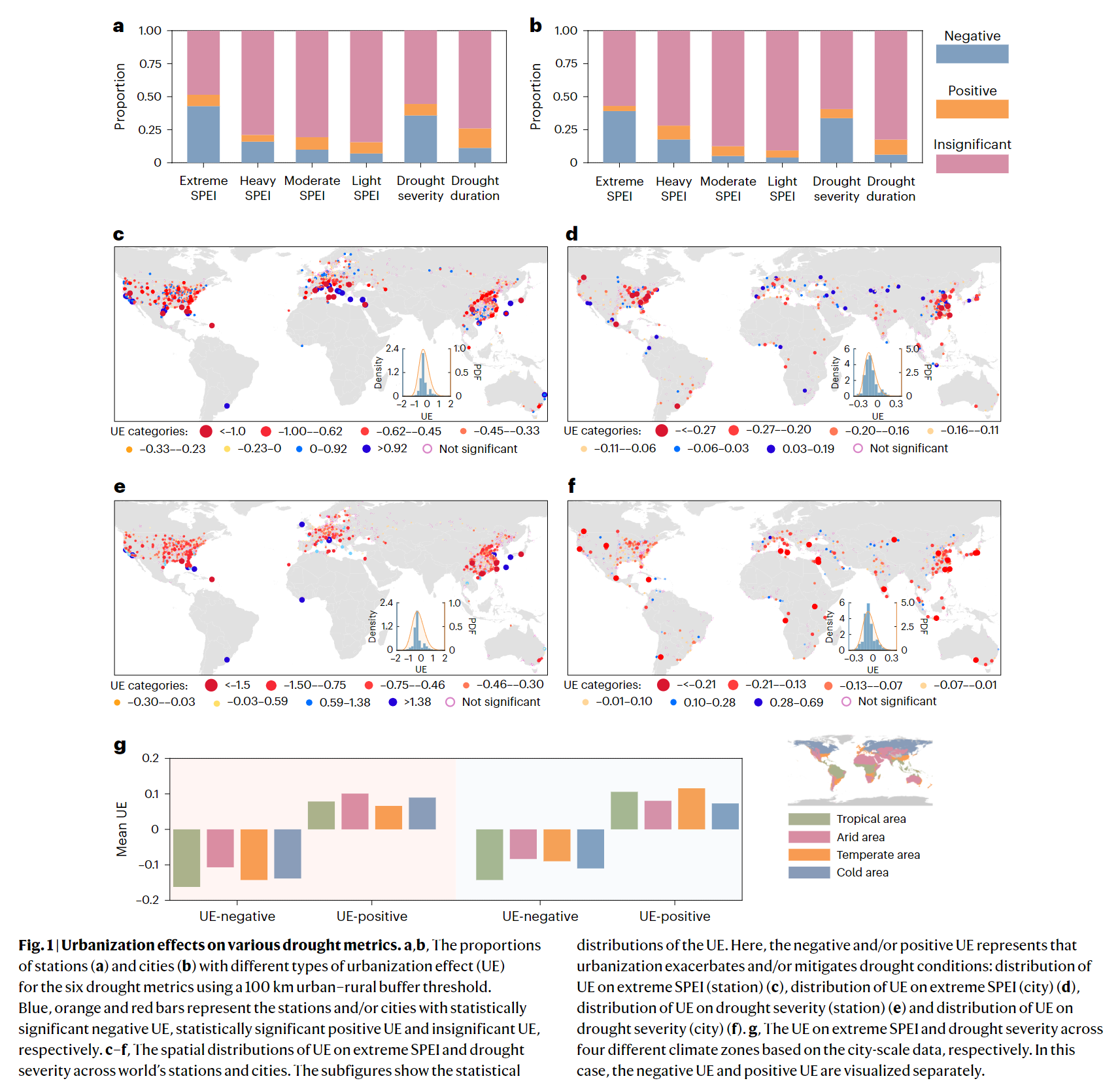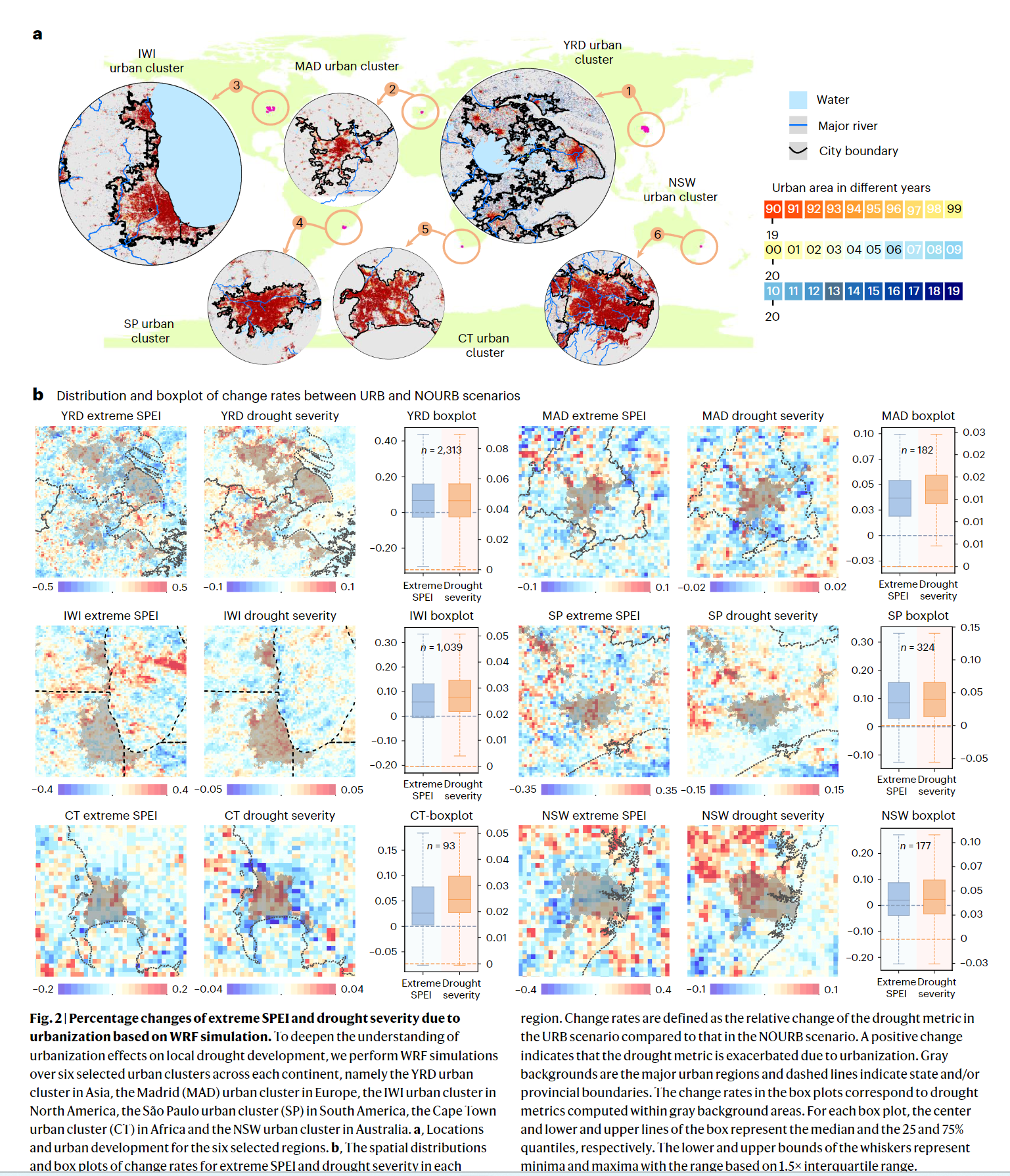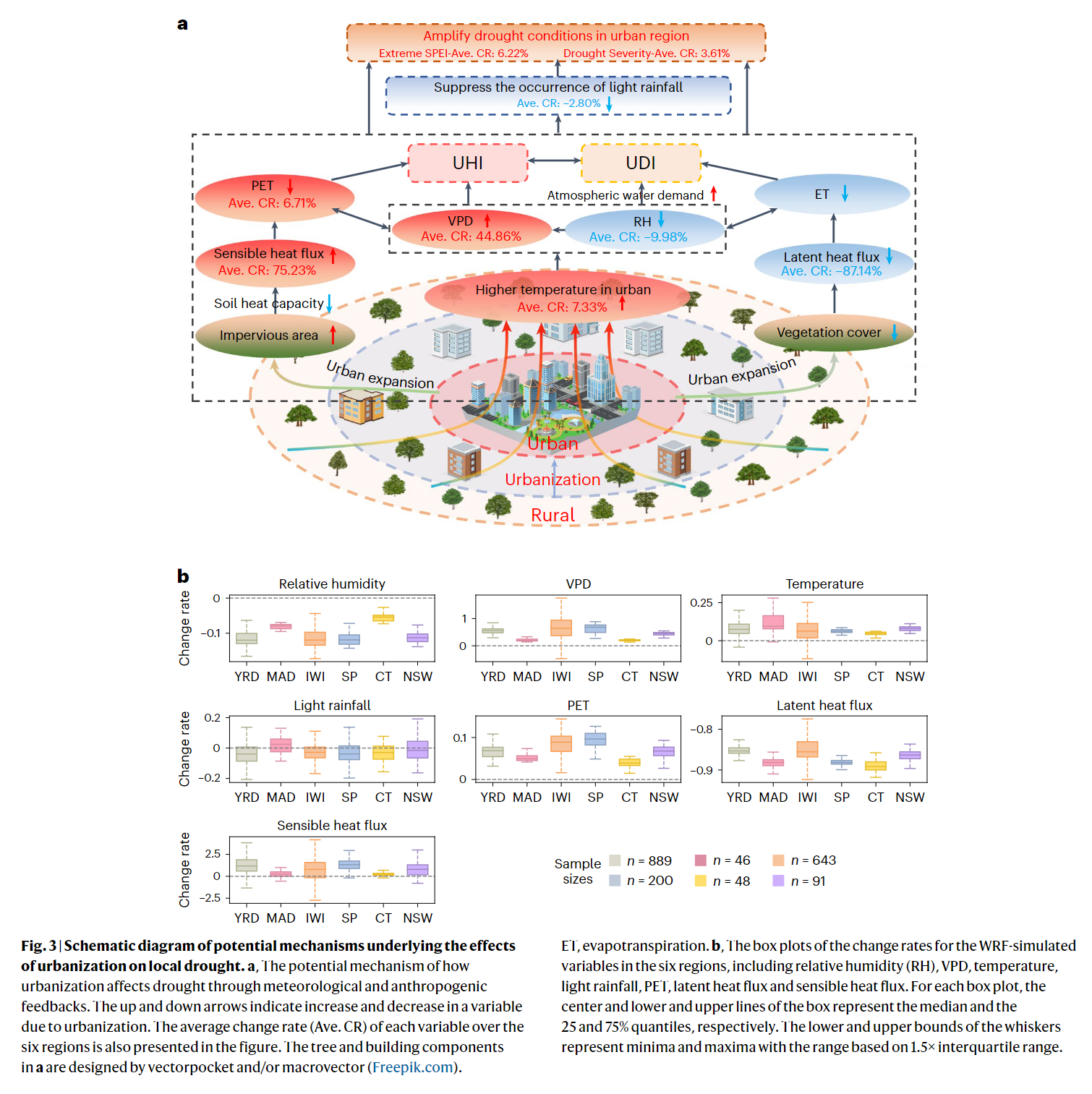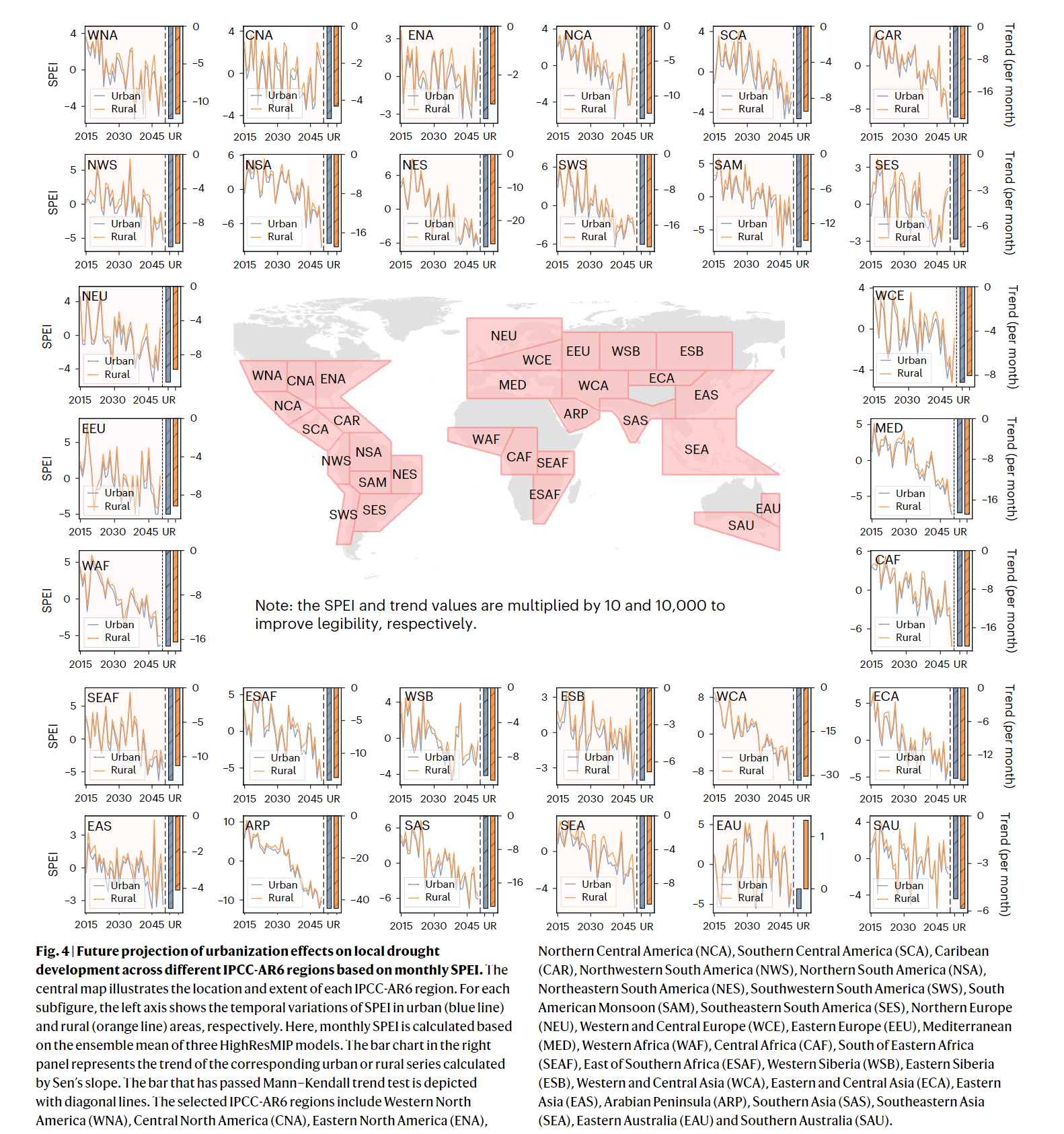Huang, S., Wang, S., Gan, Y. et al. Widespread global exacerbation of extreme drought induced by urbanization. Nat Cities
Objective:
- A lack of global-scale quantitative understanding regarding whether and to what extent urbanization exacerbates or mitigates local drought
Case:
- Global cities
Methodology:
- Standardized precipitation evapotranspiration index
- Mann-Kendall trend test and Sen’s slope
- WRF simulations
- CMIP6 model and SSP
- Sensitivity: time scale, calculation units
Data Source
- Precipitation and temperature:
- Global surface summary of the day
- Global historical climatology network
- European climate assessment dataset
- China meteorological administration
- ERA5-Land, CMIP6
- Urban and rural data: Global imperivious surface area 2.0 and GUB
- Land Cover: MCD12Q1
Findings:
- At the station level, urbanization exerts a limited impact on light and moderate drought (SPEI); whereas urbanization shows a negative relationship with heavy SPEI at 15.94% of stations

- For extreme SPEI and drought severity, urbanization is found to significantly worsen extreme SPEI and drought severity for around 43 and 36% of the stations worldwide

- City-scale findings share similar patterns with stationscale results

- Positively affected stations and cities likely concentrate in coastal areas

-
Urbanization effects generally enhance with increasing city areas
- The effects of urbanization on drought exhibits substantial seasonality, with the most prominent negative effects during warm seasons
- Drought conditions are expected to be intensified in most regions over the next three decades
